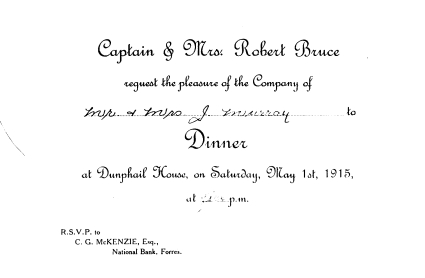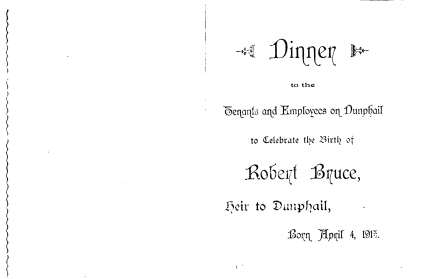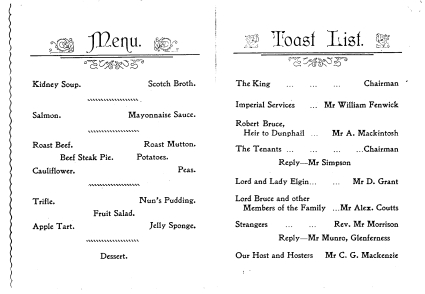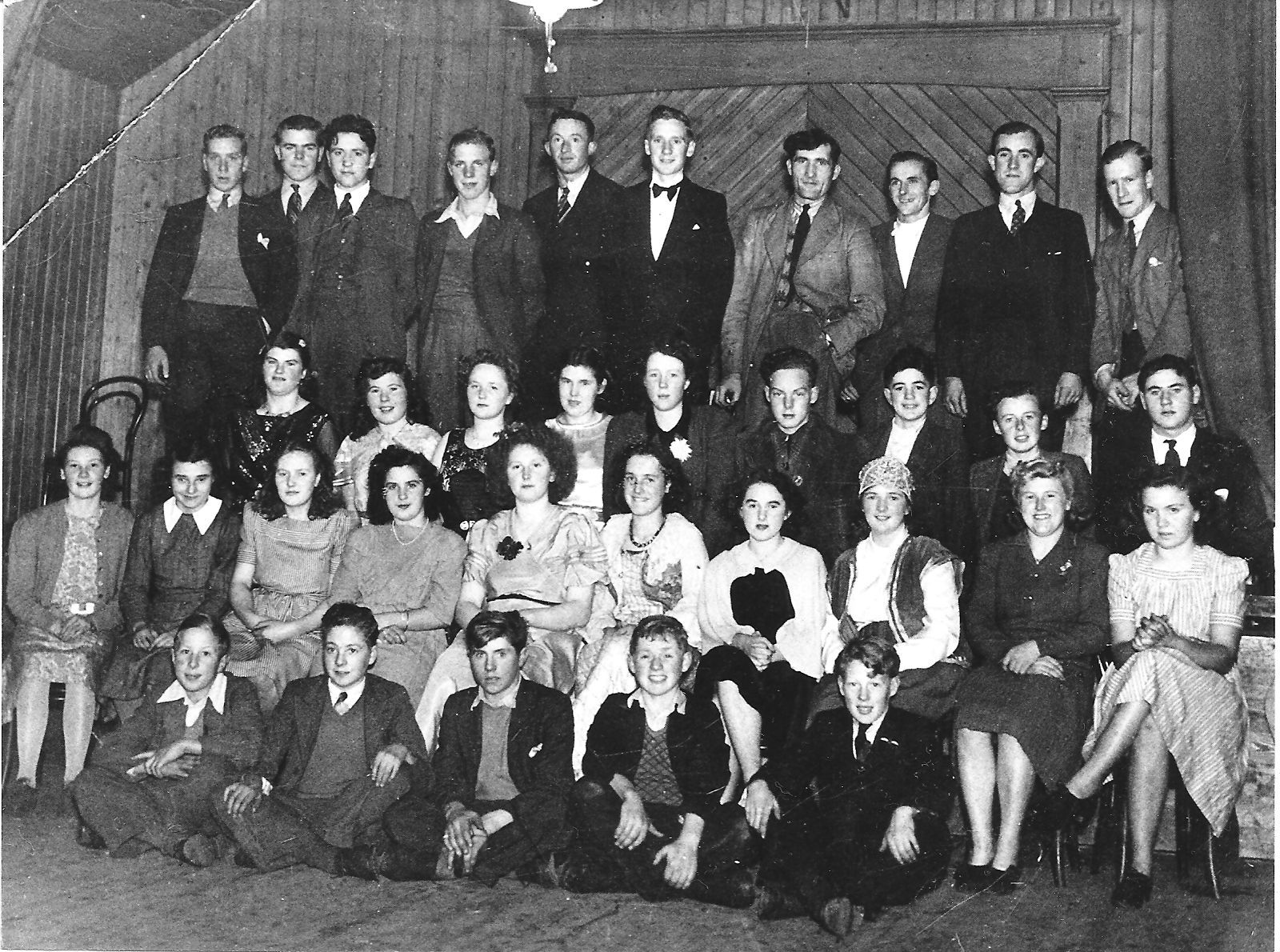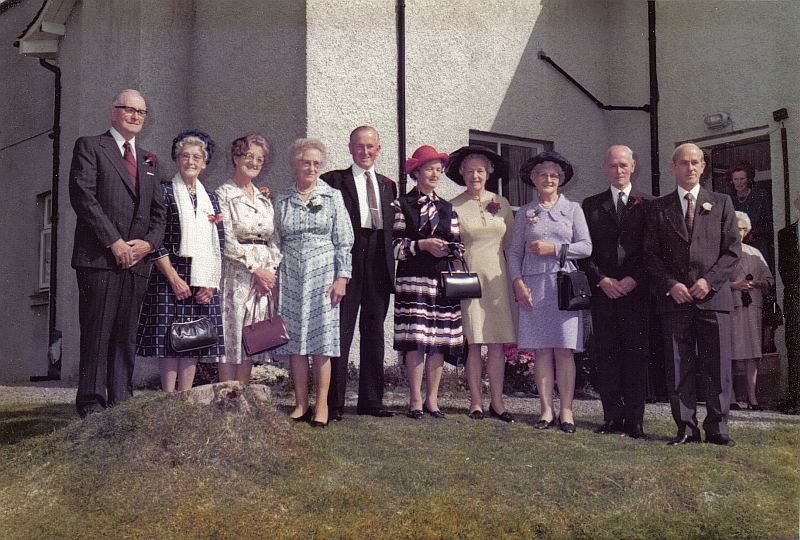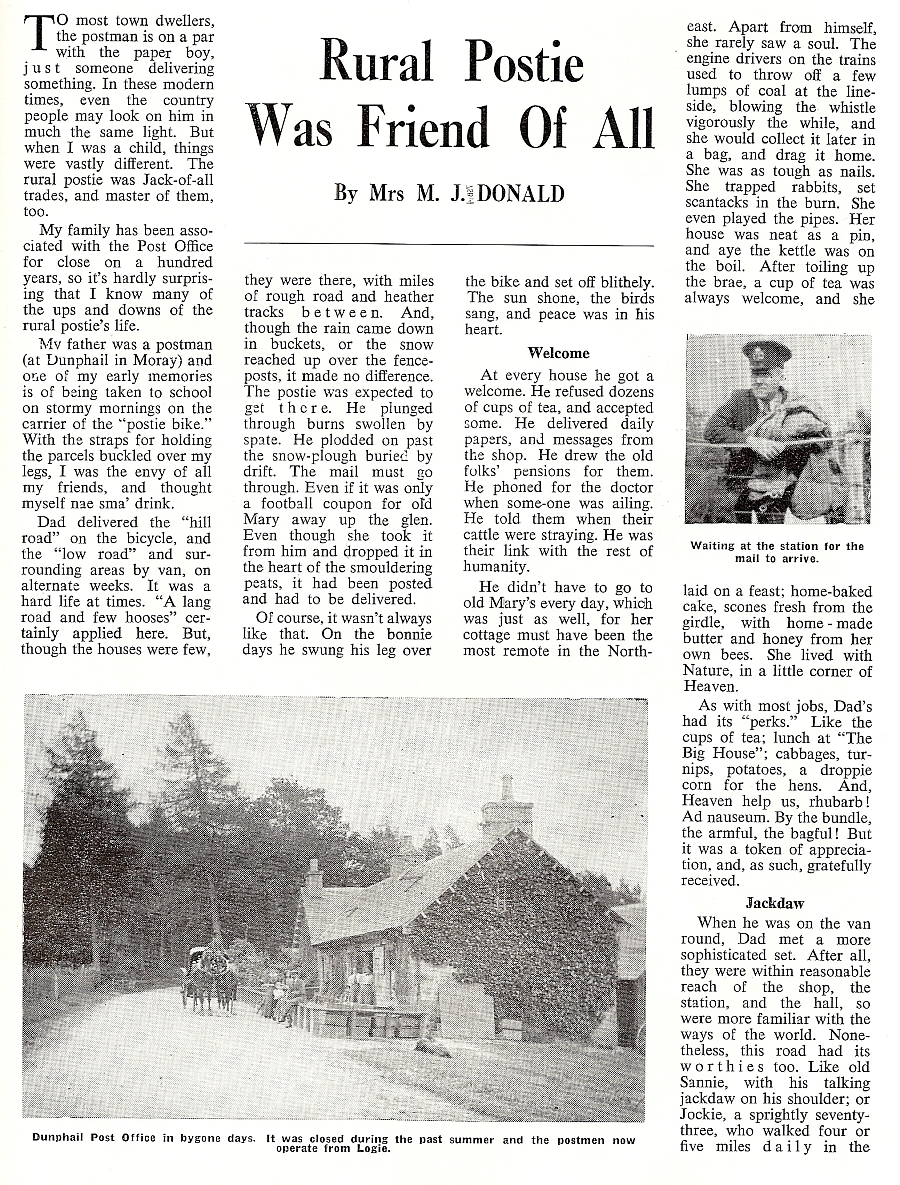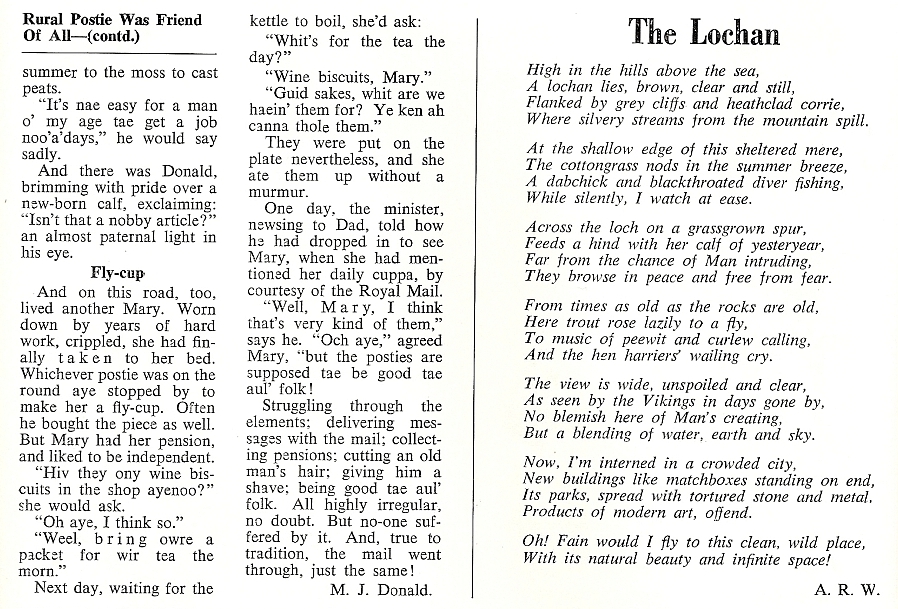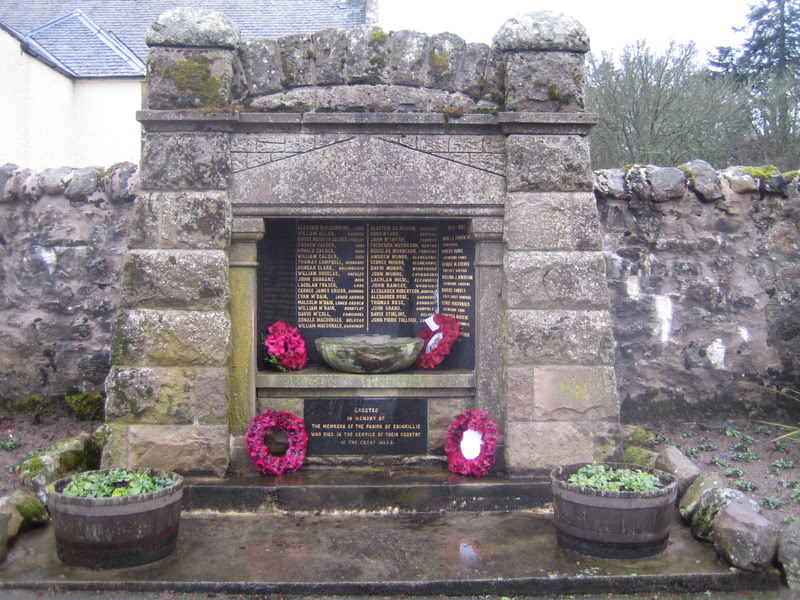Edinkillie Echoes - A collection of reminiscences and things.
The local railway line. |
The Divie Viaduct. |
The Parish in 1861. |
We've had visitors since 22nd March 2009. |
|
A scotfy Loo
Isn't aw thing scotfy noo |
How "Things were Done" !A invite to dinner and of course the menu.
In 1915 Dunphail estate probably had a very large staff, both "Indoors" and on the "Estate". It certainly had a lot more tenants and individual farms than exist today. If anyone has information about staff or tenants from this period, please get in touch. Thank you. |
|
On Stage
:- Don Fraser, James Ross, Derek Cameron, Alastair Anderson, Ian Clark, Ron Fraser,
Duncan Clark, Hans ? , Sandy Grant, Bill McTavish. |
Standing
:- Elma Davidson,Margaret Campbell, June Robertson, Violet McIntosh, Betty Fettes,
Wilson Tough, Sandy Simpson, James Rae, John Burgess. |
Seated
:- Ada Falconer, Helen Chalmers, Charlotte Smith, Margaret Clark, Doris McKay,
Monica Simpson, Carol Pozzi, Madge McTavish, Winnie Davidson,
Margaret McGillivray. |
Front
:- George Pratt, Ian Bridgeford, Walter Burgess, Kenny Mclennan, George McIntoch.
|
A Russel wedding reception at The Braemoray Hotel.
Ray Henley writes,
my mother was one of 15 children (no TV in those days!). In 1977 my
cousin Christine (daughter of Frederick) was married in Edinkillie
Church and the reception was held in the Braemoray. Ten of the
surviving brother and sisters were in attendance, which included Alex
who came over from Alaska where he emigrated to in the 1920s.My thanks to Ray Henley, now of Ascot Berkshire for the photographs and information supplied. 12th January 2009. |
||||
Another story from a former pupil.
|
||||
Edinkillie Names and meanings | ||||
An occasionally added to article explaining the origins of our local placenames. |
||||
Belvlair. (Balvlair) - From the Gaelic Baile, a residence, and Blair, Blar, a plan or field, and by extension a field of battle. The residence on plain. |
||||
Edenkillie. - The first part of this word is from the Gaelic^ Eudan, the face, literally a brow ; hence by extension it is applied to the face of a hill. It is also found as Aodann, and contracted to Ediji, Eden, Edan, and Edn. The latter part is from the Gaelic Coille, a wood, and in topography takes the forms of Kel, Kil^ Kelly, Killy, and Kyle, the wood. Signifies the woody hillside or braeface. |
||||
Lochnuan. - From the Gaelic Loch, a lake, and the Gaelic Uan, a lamb, cognate with the Latin Agnus, Welsh Oen. As is usually the case, it occurs here in the genitive plural with the preposition of prefixed, forming the word Nanuan, of the lambs. Uanan is the diminutive form. The loch of the lambs. |
||||
Oichquhourn. (Aucheorn) — The first part Oich is from the obsolete Gaelic
word Oiche, water, as found in the Oich river, the Oichel, and Loch
Oich. It is also found as Ock, Ocker, Ocke, Eck, and Uich. The
latter part of the word is from the Gaelic Cam, a mound, and by
extension applied to a stack-like hill. The genitive form is
Chuirn ; hence the old form of the word would have been Oich-a-
Chuirn. The mountain stream or the mountain lake, as the case
might be. |
||||
Pressley. - From the Gaelic Preas, a furrow or ground cut up by running water, and Ley, a meadow. The furrowed meadow land. |
||||
Regall. (Regaul) - Is from the Gaelic Reidh, a plain or level field, and more scotmonly employed to signify a mountain flat, and Anglicised Rea, Re, and Ray, and the second part is from the Gaelic Ail, a hill or rock. The smooth hill or rock. |
||||
Tillyglens. - The prefix here is from the Gaelic Tilach, a little hill or mound, and variously found as Tilla, Tillow, Tilly, and Tilli. In an Irish glossary it is given as the equivalent of Briy which is another word for a little hill, and cognate with which is the English Brae. The latter part is from the English Glen, and has the same signification as the Gaelic Gleann, and though nearly identical in form, the one has not been derived from the other, the one being Anglo-Saxon, and of much later date than the Gaelic Gleann, Welsh Glyn, The hill glen. |
||||
Information from "Place Names of Elginshire" by D Matheson. Published 1905
|
||||
The Secret ValleyBy A H Forbes
The secret valley, if it ever had a name it has been lost, lies off
the Grantown-on-Spey to Forres road 10 miles south of Forres, just
beyond the hairpin bend and bridge at Edenkillie Church. It is
recognised by an insignificant sign reading "The Beachans"
the valley is not even well known locally except to a few people
who have returned to renovate the once abandoned houses. The valley
can hardly be described as one of outstanding beauty, but, once
visited it lays a spell upon the traveller who has time to tarry along
its way.
---------- |
||||
The War Memorial
Situated in the Edinkillie Kirk carpark. |
||||
